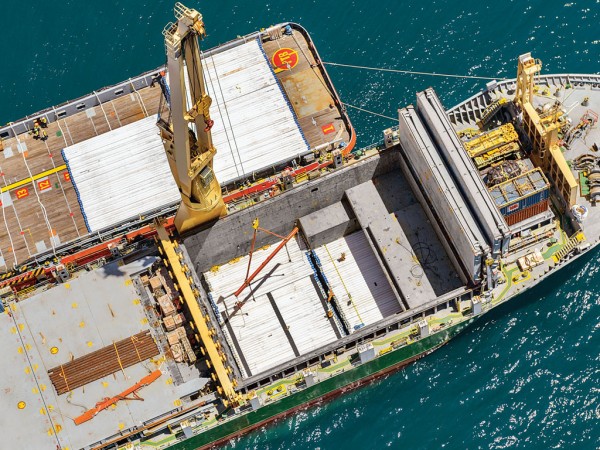Drewry’s latest forecast for multipurpose and heavylift (MPV/HL) shipping confirms that if the coronavirus (COVID-19) outbreak is contained by 4Q20, the expected demand growth for breakbulk and project cargo will stay positive but remain very weak.
However, there are a number of caveats to this outlook and in its latest Multipurpose Shipping Forecaster report, Drewry presents three different scenarios, depending on how the virus outbreak and the global economy develops over 2Q20. These range from the fairly benign best case, where the global economy picks up in 2H20 and with it dry cargo demand, to a negative scenario where COVID-19 is not contained over 2020, leading to a global recession. The base case scenario is seen as most likely.

Drewry’s base case scenario starts with the caveat that a global economic recovery will not begin until 4Q20.
Any recovery that had been anticipated for 2Q20 and 3Q20 is now expected to be delayed as some of the pent-up demand will have vanished due to both the longevity of the crisis and the oil market crash. The two events (COVID-19 plus the price of crude oil dropping below $30/bbl) have resulted in predictions of wide scale unemployment and company bankruptcies, which when occurring together reduce investment and the collective purchasing power of the world’s population.
The other key driver for the MPV/HL sector is the competition effect and the continued encroachment by container and bulk carriers into the breakbulk and project cargo space. Drewry expects a U-shaped recovery in container demand over 2021 under our base-case scenario. However, this will be tempered with continued oversupply issues in this sector, resulting in little weakening of the market share taken by the container lines. It is also the case that once the switch has been made to containerisation, shippers and receivers are reluctant to revert due to the initial investment costs. It is therefore our expectation that market share is unlikely to revert back to MPV/HL vessels but the pace of loss of that share will be slower.
As a result, Drewry expects MPV/HL cargo demand growth to stagnate in the two years to 2021, growing at an average annual rate of just 0.3%.
High-case scenario
The best-case scenario has, in our opinion, the least likelihood of becoming reality. However – for the sake of completeness – it proposes a modest but positive GDP growth forecast for 2020. It expects container demand to be weaker in 2020 but nevertheless to show positive growth compared to 2019. Meanwhile, bulk demand is hardly expected to slow over the summer months and will show steady growth over the year.
This low probability, high demand scenario suggests that although the MPV/HL market share is unlikely to be regained, the encroachment by the competing sectors is significantly reduced so that it does not worsen over the period. This leads to more buoyant demand growth for the MPV sector over the forecast period.
Low-case scenario
For the low-case scenario, which we have to say has an increasing likelihood of reality, we have anticipated a global economic recession over 2020. Large scale unemployment and business casualties lead to increasing uncertainty across global markets and a prolonged downturn in freight rates in the dry cargo sector.
For the MPV/HL segment this is compounded by weak oil prices, which remain at below $30/bbl for the foreseeable future. Demand for this sector is further squeezed by the container and bulk carriers and market share drops further. This leads to a negative demand outlook for MPV/HL vessels.





_-_127500_-_423a5f55223d31c1d41ecf09117d640663008f3b_yes.png)





